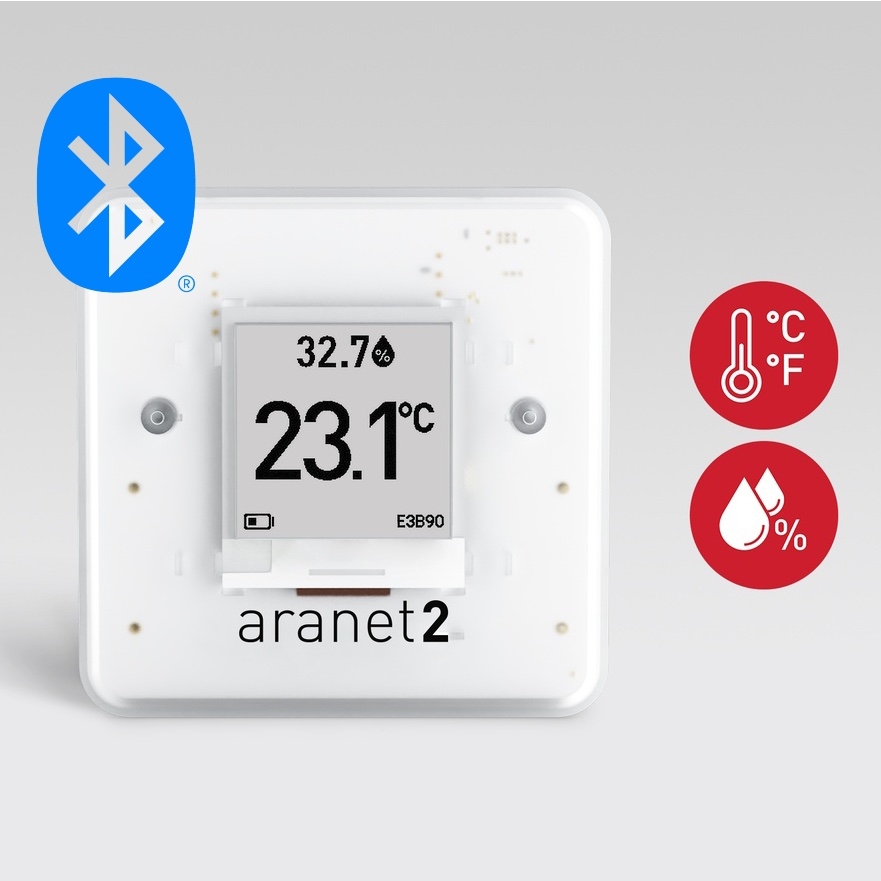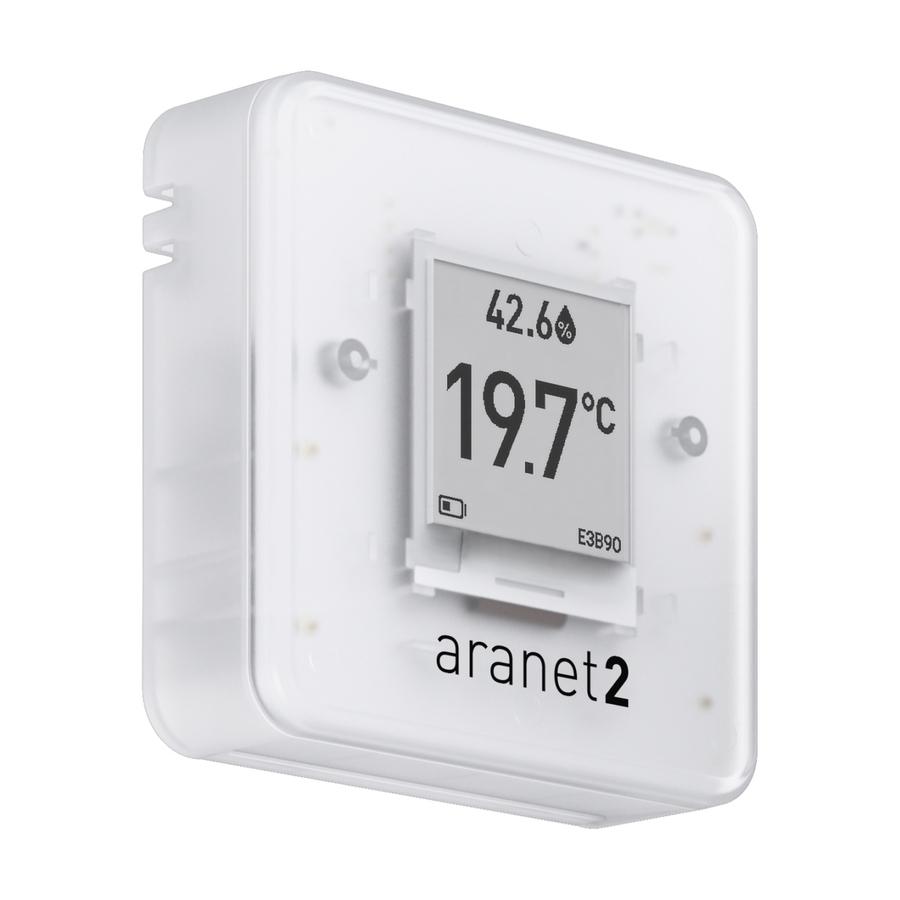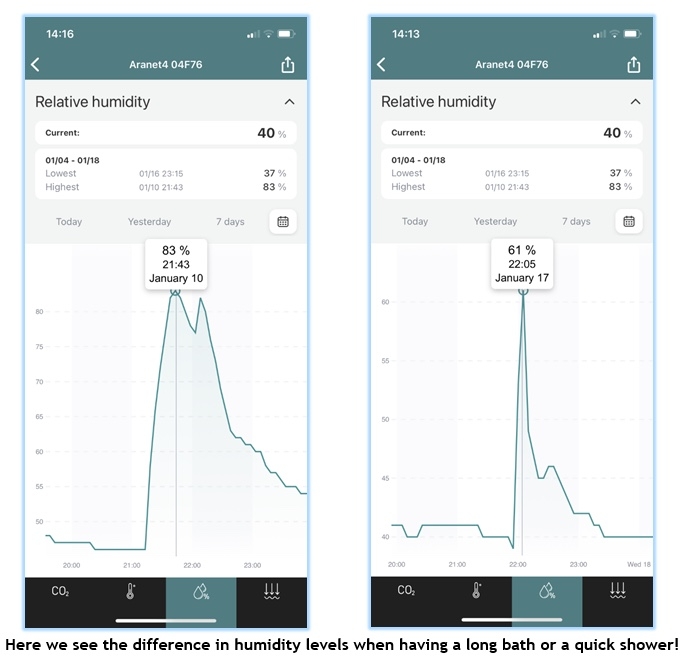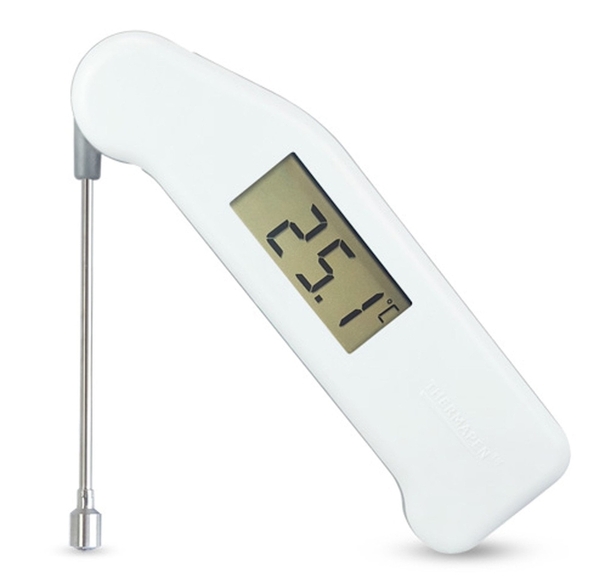Aranet2 Home
It’s a combination of a number of factors that causes condensation, damp and mould to develop in our homes. Three key factors that cause these conditions are the room temperature, the humidity level and the internal surface temperature of your windows, walls and ceilings. You can simply monitor these variables using the Aranet2 Home and Thermapen Surface Temperature Sensor.
What causes condensation, damp and mould to develop? OK We are not going to get too technical here so we will try and keep things as simple as we can. (If you want to know more about the terms that we use then please just click on the links below to our insight page)
There will always be Humidity in your home its level is likely to be around 30…60%RH.
What do we mean by Humidity? Well Humidity is effectively moisture mainly water vapour that’s held in the atmosphere within our homes, the warmer the air temperature the more moisture it can hold. This moisture will be released onto cold surfaces that are at the Dew Point Temperature.
What is the Dew Point Temperature? This is the temperature that the moisture in the air will turn to Condensation when it hits a cold surface at the ‘Dew Point’ temperature. The Dew Point temperature is based entirely on the air temperature and humidity level within the room. Condensation in the home is most noticeable on the inside of your windows, but it’s also present on other cold surfaces such as walls and ceilings, where it’s not normally noticeable until damp & then Mould begin to form.
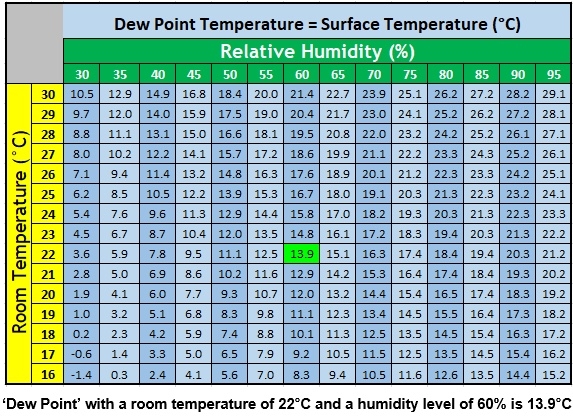
An increase in the humidity level is often the main contributor that causes condensation, damp and mould to develop in our homes. Yet once you understand what causes humidity to rise and have a means of monitoring it with the Aranet2 Home you can then look for ways to control its level, this will often mean simply changing a few of the things that you or your family do that contribute to the humidity in your home.
Here are a few general points to remember as to what causes humidity to build up, condensation to form and damp and mould to develop.
Humidity and Condensation
In general, when the humidity is high inside your home and it is cold outside water vapour condenses on cold surfaces such as windows, walls and ceilings. Especially single pain windows, solid or poorly insulated walls and ceilings without adequate loft insulation.
The main aim to avoid condensation, damp & mould is to aim a relatively low humidity (30…60%RH) and a warm (18…22°C) environment. This include the surface temperature of the walls and ceilings. The Aranet2 Home will help you monitor Humidity & Temperature over time, and a Thermapen surface temperature sensor will help you monitor the cold surfaces that could support condensation, damp and mould. With these simple tools you will be able to monitor the conditions that really affect your living environment.
These every day activities cause higher levels of humidity that lead to the formation of condensation, damp & mould on cold surfaces.
Never dry clothes or bedding on radiators, wherever possible dry your clothes/bedding outside. If you use a clothes dryer, make sure that it is in a room that’s vented to the outside. If you must dry your clothes on a clothes rack inside, do this in a well-ventilated room with doors closed to the rest of the house.
When cooking keep the lids on your pots and pans and simmer rather than boil. Use your Aranet2 Home in the kitchen to monitor the effects of cocking and the actions you take to remove the humidity that causes damp and mould to develop in other areas within your home. Humidity does not stay were its generated so always keep the kitchen door closed and if available use suitable fans or extractors to remove any access humidity produced. Never use your gas cooker to heart your kitchen as this produces high levels of humidity.
When you are bathing or taking a shower keep the doors to the bathroom closed and use suitable fans or open a window for a few minutes to quickly remove any access humidity produced, this stops the moisture reaching other rooms, especially bedrooms which are often colder and more vulnerable to condensation. When taking a bath fill with cold water first and then hot this will reduce the steam produced and reduce humidity levels. If you take a shower don’t take your time, hurry up!
Monitor your internal humidity levels and on dry days open a few windows in different rooms to ventilate the house quickly this will remove high ambient levels of humidity that can build up over time.




